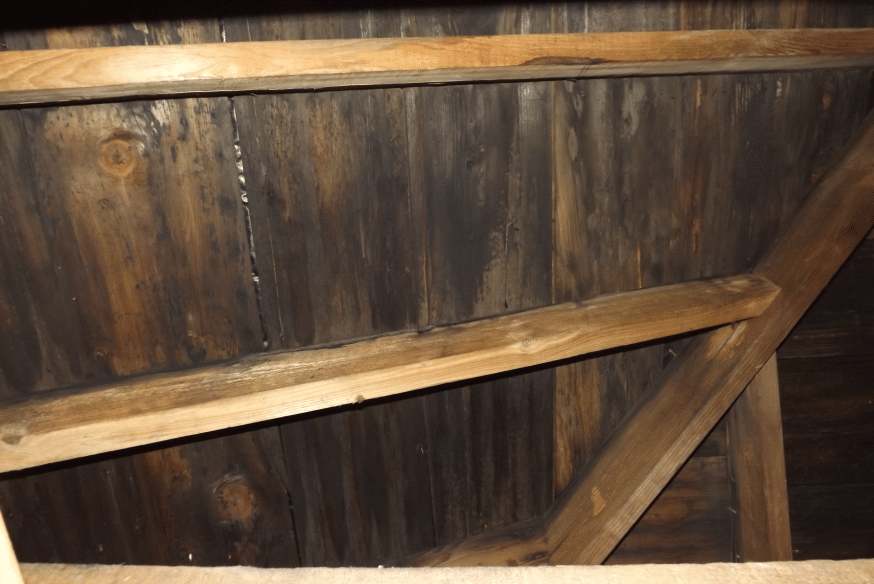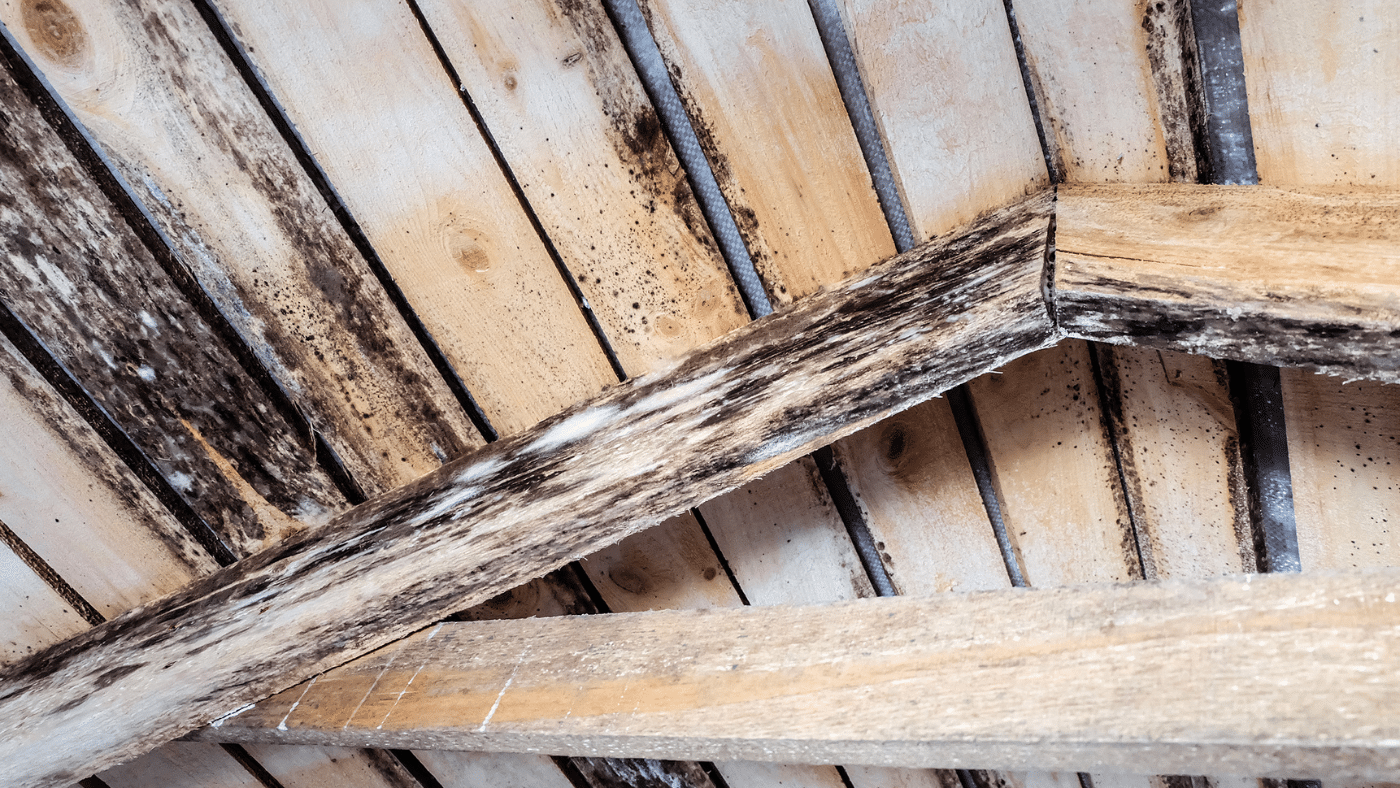Mold is made up of microorganisms that can be found just about anywhere. Inside and outside of your home — wherever there is moisture and cellulose material such as paper or wood — mold can grow. For homeowners, mold can develop in places not often inspected and for reasons not commonly understood. Left untreated, exposure to mold can result in eye and throat irritation, coughing, headaches and other allergic reactions. People with compromised immune systems, children and the elderly are particularly at risk. No matter where or why, intervention is key when mold is found.
In this post, we discuss
- why attics are the perfect environment for the development of mold and common misperceptions about why mold grows in attics,
- the telltale signs that mold is present in the attic,
- ways to prevent mold from growing in the attic and
- what to do if mold does grow in the attic.
Mold in the Attic: A Common Occurrence and Not for the Reason You Might Think
Attics are one of the most common places in the home where mold can develop. Upon discovering black mold on the wood sheathing and framing in the attic, the most common conclusion many homeowners come to is that there is a roof leak. The insurance company is notified, and an adjuster and engineer are dispatched to the property to identify the source of the moisture. Vertex’s insurance clients have retained us to investigate numerous attic mold claims over the years and in my experience, roof leaks are most likely not the problem.
The source of moisture in most mold attic claims is condensation that forms on the underside of the wood sheathing of the roof. A bathroom ceiling fan that vents into the attic space may compound the issue, but ultimately, condensation is the problem. The mold forms when warm and moist air from the living space of the home bleeds into the attic space. The warm air in the attic meets the cold underside of the plywood roof sheathing, causing condensation. The combination of moisture, wood and time is the perfect recipe for the development of mold.
Do I Have Attic Mold?
Homeowners don’t go into their attics regularly for some good reasons: access may be limited and lighting is often not ideal. These conditions give mold lots of time to grow. Here is what to look for if you suspect mold in the attic:

- Dark staining on plywood roof sheathing. If you see dark staining on the roof sheathing, you have mold that must be removed (see picture below). The staining will often appear on only one side of the attic sheathing — usually the side of the home that gets the least exposure to the sun, limiting how quickly condensation dries.
- Warm and static air in the attic. If you go into an attic and the air is warm and static, mold could be a problem. An attic in the winter months should feel cold, breezy and ventilated. If the space becomes confined, warm and stuffy, condensation on the sheathing will persist and mold will form.
- Mildew smell. You don’t need to take a sample and send it to a laboratory to detect mold. Your nose will tell you if there is a problem. If the attic smells musty, look for staining.
- Frost on the roof sheathing. In cold climates, the conditions in the attic could cause the condensation to freeze and frost will be visible. You will also notice that the nails from the roof shingles extending through the roof sheathing will be rusted. The winter is often when conditions are most conducive to mold problems. The large temperature difference between inside and outside the home causes condensation to form on surfaces that are not adequately insulated.
How Can I Prevent Mold in My Attic?
- Insulate. When you go into the attic in the winter, it should feel much colder than the living space. If you don’t have adequate insulation between the ceiling of the living space and the attic space, heat could be leaking into the attic. The increase in temperature against the cold roof sheathing will cause condensation. The United States Department of Energy recommends that attics have 12 to 15 inches of fiberglass or cellulose insulation.
- Ventilate. The attic space should feel breezy. Not many attic spaces rely on mechanical fans to ventilate the attic space. Passive ventilation systems rely on airflow through soffit and gable vents, which move air upward into the attic, flows along the plywood sheathing, and escapes through the ridge vent (see diagram below). Be sure to check that the soffit vents in the attic are clear. Often, the insulation in the attic is installed over the vents, keeping outside air from entering the attic. The movement of air within the attic will help keep the sheathing dry. If the source of moisture is controlled, mold will not form.

I Have Mold In My Attic: What Now?
The attic is one of the most dangerous places in your home. The area is confined, poorly lit and one false step could cause injury. Do-it-yourself mold remediation is not the best idea. We recommend hiring a professional cleaning company to treat and remove the mold. The peace of mind that comes with knowing that the mold has been removed correctly is often worth the price.
Professional removal of mold may include:
- Chemical Remediation. The most common way to treat mold on the roof sheathing in the attic is with chemicals. Powerful cleaning chemicals are used to treat the mold, and then anti-mold sealers are used to prevent mold from reoccurring. Don’t expect the sheathing to look new again, but if you hire a professional mold remediation company you will have some assurance that the mold has been treated and future exposure is not a concern.
- Abrasive Blasting. The most effective — and costliest – method for treating mold is abrasive blasting. Professional mold remediation companies will use dry ice, soda ash or sand to blast off the top layer of wood. The affected area in the attic will be isolated and the abrasive material removed with vacuums. The abrasive blasting is loud, time-consuming and expensive, which makes it less popular than chemical remediation.
Mold in the attic space is a common problem, especially in colder climates where temperature swings in the attic are greatest. Although a roof leak might cause water intrusion and mold to form, the mold is likely confined to the area where the leak occurred. If you observe dark mold staining in multiple areas on the attic roof sheathing, condensation from poor ventilation and/or inadequate insulation is likely the problem. If you do find mold, hire a professional mold remediation company to properly treat and/or remove the mold.
The VERTEX team has years of experience and expertise in mold claim investigation and remediation. For more information on mold investigation, prevention and removal, contact Jonathan Noris.




